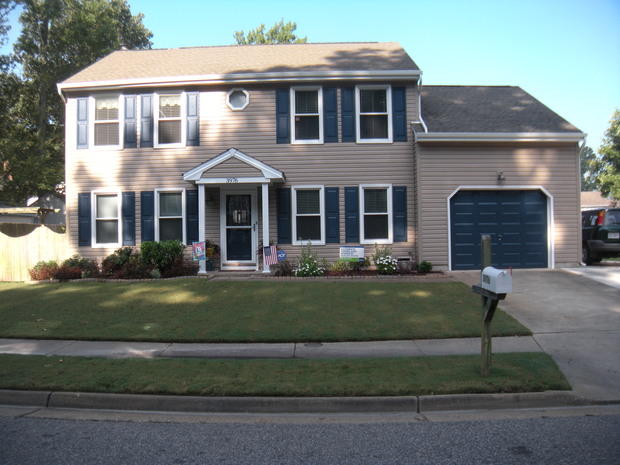
Most siding requires very little maintenance since it is designed to be in the elements, have trees and bushes brush up against it and the occasional baseball or football thrown on it. However, no matter what type of siding is on your home, there are some methods to keep your siding in good shape.
Vinyl Siding Upkeep
Vinyl siding is designed to be left alone, but if a piece of siding happens to come loose, you need to fix it soon. If it is allowed to flap in the wind, get bent or curved into a different shape then it won’t go back on and will need to be replaced.
It is a good idea to pay to have your vinyl siding power washed either before or after summer. Spiders and other insects like to live in the small ledges made in the siding stair-steps. Pressure washing will remove most of these, though it is a good idea to run a broom over as much of it as you can. Also, your siding will just get dirty from blowing wind and the elements and a good washing once a year with make a difference you won’t believe.
Wood Siding Maintenance
Wood siding needs to be treated every 4 to 6 years depending on how fierce the elements are in your area. In the mountain states where the sun and snow can be particularly vicious, you might need to have your wood siding treated more often, and possibly less often in temperate climates.
The good thing, part of the process of treating involves pressure washing the siding and washing the windows after, which can take care of a few things for you.
Wood Siding Repair
Cracks and holes in your wood siding will allow moisture and pests to get in. You should always be sure the underlying problem is fixed before you repair the siding. Otherwise the problem may crop up again later.
Repair methods vary depending on the type of siding you have, but most are fairly easy to fix. Re-nailing loose sheathing, replacing rotted elements and patching any holes or gaps on the underlying surface will help in maintaining your siding after it is repaired.
If your home has multiple stories (levels), a siding contractor may need to have special equipment to get to the taller areas of your home. Remember, siding can be heavy and awkward to work with, so they may not be able to carry it up ladders.
It’s also important to try to pinpoint the nature of the problem before repairs begin. For example, look for obvious clues, such as overgrown tree roots or damaged gutters that let water drain onto masonry surfaces. Also check the slope of the surrounding landscape to see if it needs to be regraded to direct water away from the foundation.
Removing siding completely can be a dirty and difficult job requiring specialized equipment and protective gear. It’s best to leave this job to a siding professional.
Ready to start your siding care?
Find ProsMaintaining Stucco Siding
Stucco siding is often attacked by woodpeckers, and the holes they leave need to be replaced so that you don’t have a family of birds living in your walls. They are not hard to hear, so once you notice the woodpecker damage, do what you can to deter them from returning.
Stucco siding is very porous, and if trees leak sap or mold is allowed to grow, it can take over. Even if you are working near your home and spill a drink, it can stain rather quickly if it is not tended to. Go around your stucco siding at least once or twice a year to remove any stains that are starting to form. Degreaser works well, and bleach might do the trick on the right color of stucco. Test in a discrete spot first.
Metal Siding Maintenance
If for some reason a portion of your metal siding is beginning to rust, scrape off the rust and coat with a sealant so that it won’t rust through. Many metal siding options are painted, and if the paint is peeling or starting to chip, scraping and repainting will preserve the life of the rest of the coat. Even if you don’t have the budget to repaint the whole house, just fix what needs fixing until you do.
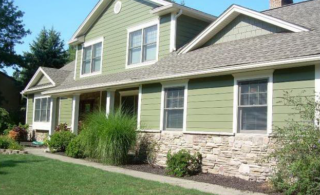 Pros, Cons, & Costs: Hardie Board Siding
Pros, Cons, & Costs: Hardie Board Siding 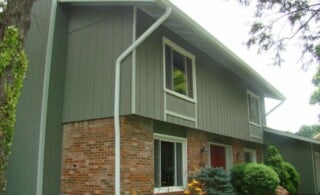 T1-11 Siding
T1-11 Siding  Popular Types of Siding for Your Home
Popular Types of Siding for Your Home 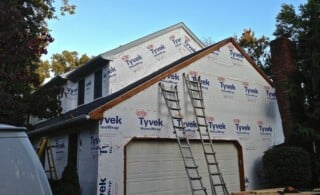 Siding Replacement: What to Expect
Siding Replacement: What to Expect 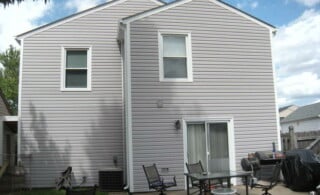 Vinyl Siding Cost Guide – Options, Installation & Extras
Vinyl Siding Cost Guide – Options, Installation & Extras 

Are You Familiar With This Topic? Share Your Experience.